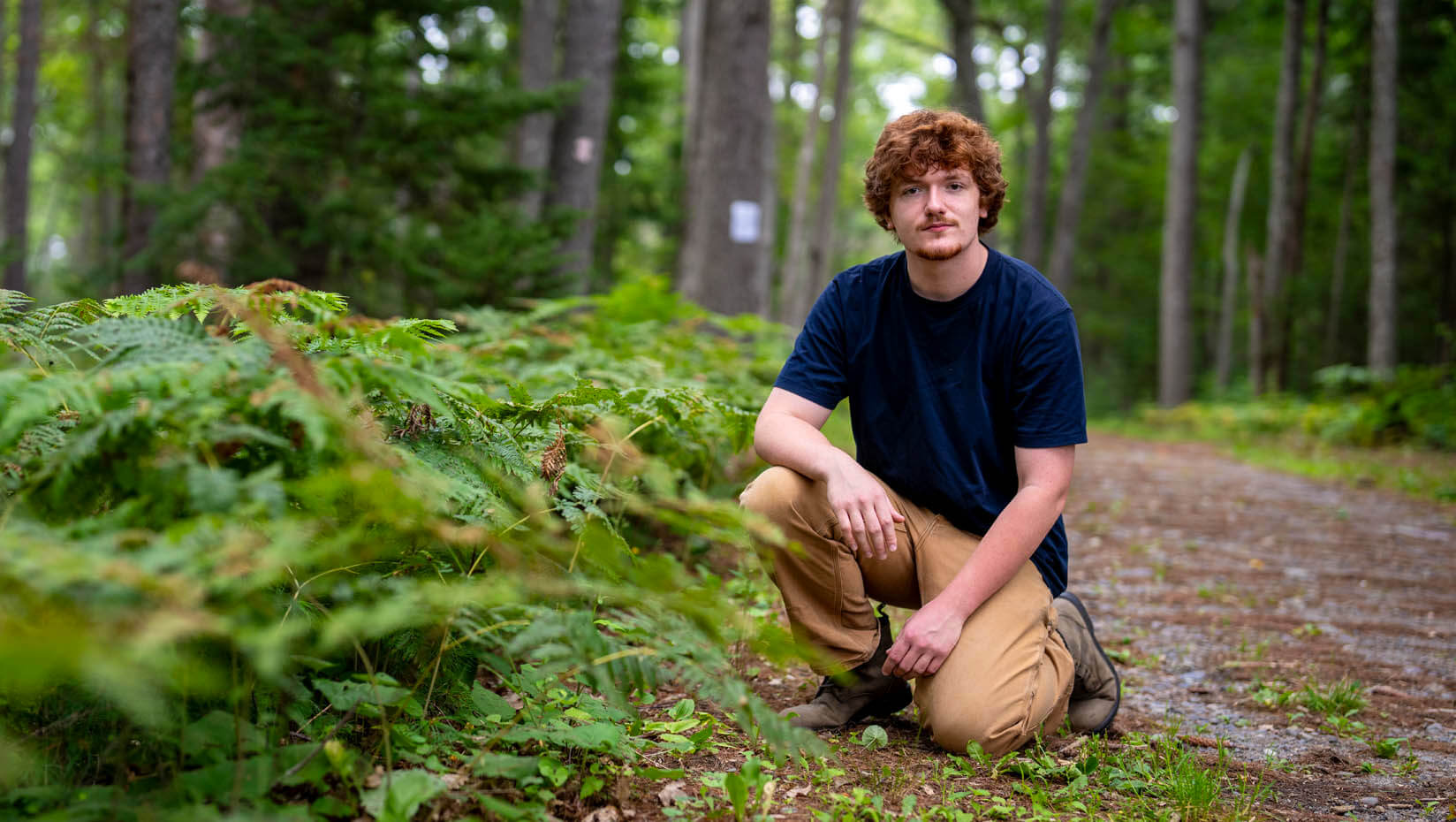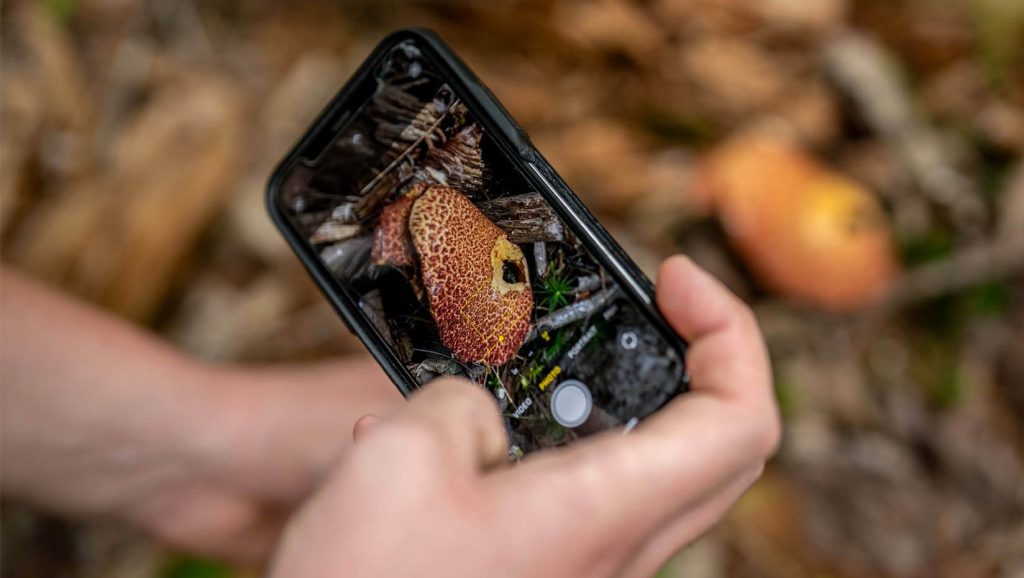
Brady Kaelin: Making every spore count
Brady Kaelin combines his passion for fungi and knowledge of the sciences to protect the mushrooms he loves. The senior majoring in botany with a professional writing minor is working alongside mentor Pete Avis, adjunct professor and cooperating faculty at the School of Biology and Ecology, to study fungal populations in southern Maine.
Kaelin grew up in Patten, and began his undergraduate career at the University of Maine at Fort Kent. He transferred to UMaine in Orono so he could engage in the specialty courses offered there that related to his interest in what fungal populations contribute to the ecosystem.
Kaelin met Avis while taking the course Biology of the Fungi with Seanna Annis, where Avis was a guest speaker on the topic of mycorrhizal fungi. After that lecture, Kaelin approached Avis to ask if he needed an assistant on any current research projects. Avis pulled Kaelin into the ongoing Maine-eDNA project, where he learned skills like DNA extraction and polymerase chain reaction (PCR) techniques, a process that produces many copies of a specific segment of DNA to detect genetic material.
“[Brady] is one of the hardest working students I have come across in a long time, and not just in academic stuff,” Avis says. “He is constantly finding ways to pay his bills and get through school. Those are big challenges for anybody, but Brady’s taking those challenges head on and finding the opportunities and the support to meet his interests and his needs to get through his experience here. [Brady] is the reason universities can do great things to students; they can provide opportunities for students like Brady who can then hop on those opportunities and really go do the things that they want.”
Kaelin says that having Avis as a mentor has proved invaluable to further his knowledge of mycology, the scientific study of fungi.
“I’m extremely fortunate to be going to a campus where there are mycologists. It’s very rare that there are any, at least in New England it seems, and I didn’t know he was here until I showed up here, so it was, like, total luck,” says Kaelin.

Avis then got Kaelin involved in another project documenting fungal populations on islands across Maine. Kaelin worked briefly on Vinalhaven and nearby islands, where he took soil samples back to UMaine to process the soil and generate accurate lists of genetic markers present.
That research focused mainly on mycorrhizal fungi, but Kaelin wanted to see similar data for more types of fungi.
“I couldn’t find any old archives of fungal populations surveys, so I was thinking I could center a project around building a sort of foundation for DNA based fungal populations data. I am particularly interested in human disturbance in relation to fungal population data because I feel like that could be the main contributor to there being lowered fungal diversity in certain areas,” says Kaelin.
Kaelin combined the techniques he learned in Avis’ lab and the field research he conducted in Vinalhaven to formulate his own project. Kaelin will take soil samples from sites at land trusts in Harpswell and near Portland, and run them through a DNA extraction. He’ll then amplify their genetic markers using PCR and a process called metabarcoding to get a comprehensive list of the species present in those areas. That data can then be tied back to annual foot traffic data to see if there’s any correlation between the richness of fungal diversity and foot traffic on specific trails throughout the properties.
“There are many efforts in place to protect rare species of plants, but not much is really understood about the rarity of fungal species or how to protect them or whether foot traffic even affects that,” says Kaelin. “At the very least, it will provide a baseline of data relating to Maine fungal populations that didn’t exist before, and at the most, it shows some sort of correlation. If there is a correlation, maybe new protocols could be suggested in the future after further research is conducted.”
Kaelin plans to undergo the fieldwork portion of this project in the fall. He will then spend the rest of his time on the project, which is set to finish in April 2024, connecting the data that emerges from his samples to the available trail data. In the future, Kaelin hopes that other researchers will use the data from this experiment to understand what areas need protection so that fungal diversity may be preserved. Certain protocols may be suggested — such as how frequently people hike, where they can hike and what they should have on them while hiking — that would ensure the safety of the fungal populations present. Though these would likely be far down the road, this study is an important step in the conservation of fungal life.
“[Fungi] are one of the most foundational parts of an ecosystem,” Kaelin says. “They’re responsible for the decomposition of plant matter and the support of living plants and their immune systems. You don’t see them the way you do plants. They come up once a year, but that’s just the fruit, so people don’t really think about it or appreciate it.”
This story was written by Erin Cabral, 2023 Summer Intern at the UMaine Division of Marketing at Communications.
Contact: Marcus Wolf, 207.581.3721; marcus.wolf@maine.edu
